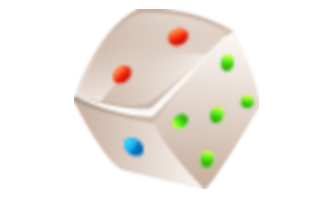Acids and bases
Science - Fifth Grade
Acids and bases
Study Guide

Acids and bases
Quiz

Acids and bases
Flash Cards

Acids and bases
Worksheet

Acids and bases
Game

Acids and bases
Vocabulary List

Acids & Bases
Flip Chart

Study Guide Acids and bases
❮
1
/
4
❯
ACIDS AND BASES Most every liquid has acidic or basic traits. Acids and bases are two important compounds. Acids An Acid is a type of sour substance. Examples of acids are lemon juice and vinegar. Remember: DO NOT TASTE SUBSTANCES during science experiments. Some Characteristics of ACIDS Important to Know: Acids taste sour Acids react strongly with metals (example: acid mixed with iron gives off hydrogen gases) Strong acids are dangerous and can burn your skin!!! Remember: DO NOT TOUCH SUBSTANCES during science experiments. Weak acids are what give food that sour taste. Examples of weak acids are vinegar, apples, citrus fruit, spinach. Strong acids are dangerous! They can burn your skin instantly when touched – so you do NOT want to touch or even get near strong acids! When placed in water, acids release hydrogen ions into the water. Remember ions are negatively or positively charged atoms. When an acidic substance dissolves in water, hydrogen atoms break away from the acid molecules. This process forms hydrogen ions. The more hydrogen ions formed, the stronger the acid. Lesson Checkpoint: What is an ACID? Give one example of an acid. Bases A base is a type of bitter substance. A base dissolved in water is called a basic solution. Examples of a base substance are soap and baking soda. A base releases hydroxide ions in water. © Copyright NewPath Learning. All Rights Reserved. Permission is granted for the purchaser to print copies for non-commercial educational purposes only. Visit us at www.NewPathLearning.com.
Some Characteristics of BASES Important to Know: Bases taste bitter Bases often have a slippery feel Strong bases are extremely dangerous and can burn your skin!!! Bases are also called alkalis Lesson Checkpoint: What is an BASE? Give one example of a base. Identification of Acids and Bases Scientists use a pH scale to measure how acidic or basic a substance is. pH = potential of hydrogen A strong Acid has a very low pH (0-4). A strong Base has a very high pH (10-14). A neutral solution is one that has a pH of 7 – it is not an acid or a base. The pH Scale © Copyright NewPath Learning. All Rights Reserved. Permission is granted for the purchaser to print copies for non-commercial educational purposes only. Visit us at www.NewPathLearning.com.
• The pH scale is numbered from 0 14. • The lower the number = the more hydrogen ions = the more acidic the substance is • The strength of an acid increases with distance from pH ranking of 7. • Any substance listed below pH 7 is acidic. • Example of an acid from the pH chart above is a tomato = pH of 4 • The higher the number = the less hydrogen ions = the more basic the substance is • The strength of a base increases with distance from pH ranking of 7. • Any substance above pH 7 is basic. • Example of a base from above pH chart is soap = pH of 10 • Pure water has a pH of 7. Pure water is not an acid or a base - it is neutral. Lesson Checkpoint: What color is used to represent a substance with a pH ranking of 1 on a pH scale? Indicator Paper: Scientists use a variety of pH indicators to determine which substances are bases and which are acids. These pH indicators have very special chemicals that will change color if you change the pH by adding an acid or base to it. There is special paper, called universal indicator paper, which acids and bases react with. The reactions are visible in the form of different colors on the paper. The universal paper comes along with a pH scale to help determine if the substance you were testing is an acid, a base, or neutral. © Copyright NewPath Learning. All Rights Reserved. Permission is granted for the purchaser to print copies for non-commercial educational purposes only. Visit us at www.NewPathLearning.com.
A strong acid will turn the universal indicator paper red. A strong base will turn universal indicator paper purple. Scientists also use a similar type of indicator paper called litmus paper, which is special paper used to detect the presence of an acid or a base. Litmus paper will tell you the pH of a particular substance by the color it turns when the paper is dipped into that substance. Pink Litmus paper determines if a substance is a base or not. Blue Litmus paper determines if a substance is an acid or not. Lesson Checkpoint: What color will a strong base turn universal indicator paper? © Copyright NewPath Learning. All Rights Reserved. Permission is granted for the purchaser to print copies for non-commercial educational purposes only. Visit us at www.NewPathLearning.com.
